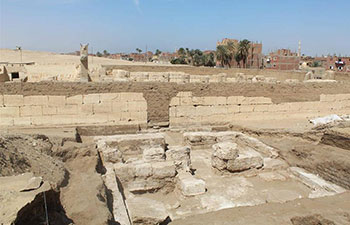HOUSTON, March 29 (Xinhua) -- U.S. natural gas design capacity and demonstrated peak capacity both declined slightly last year compared with 2017, the U.S. Energy Information Administration (EIA) said Friday.
The two capacities are EIA's metrics for assessing underground working natural gas storage capacity in the Lower 48 states as well as in most U.S. regions.
According to EIA's annual report of Underground Natural Gas Working Storage Capacity released on Friday, in the Lower 48 states, natural gas design capacity decreased by 0.3 percent, or 13 billion cubic feet (about 368.12 million cubic meters), to 4,712 billion cubic feet between November 2017 and November 2018.
The demonstrated peak capacity was down by 1.2 percent, or 49 billion cubic feet, to 4,268 billion cubic feet as of the November 2018 report period (from December 2013 through November 2018) compared with November 2017 report period (from December 2012 through November 2017).
The design capacity and demonstrated peak capacity in the Lower 48 states account for 50 percent of national capacity, respectively.
The design capacity, sometimes referred to as nameplate capacity, is based on the physical characteristics of the reservoir, installed equipment, and operating procedures on the site, and often must be certified by federal or state regulators.
The demonstrated peak capacity, or total demonstrated maximum working gas capacity, represents the sum of peak monthly working natural gas volumes observed, by field, during the most recent five-year period, regardless of when the individual peaks occurred.
The Lower 48 states, also called the contiguous United States, consist of the 48 adjoining states of the United States, plus the District of Columbia, and excludes the non-contiguous states of Alaska and Hawaii, and all off-shore insular areas.













